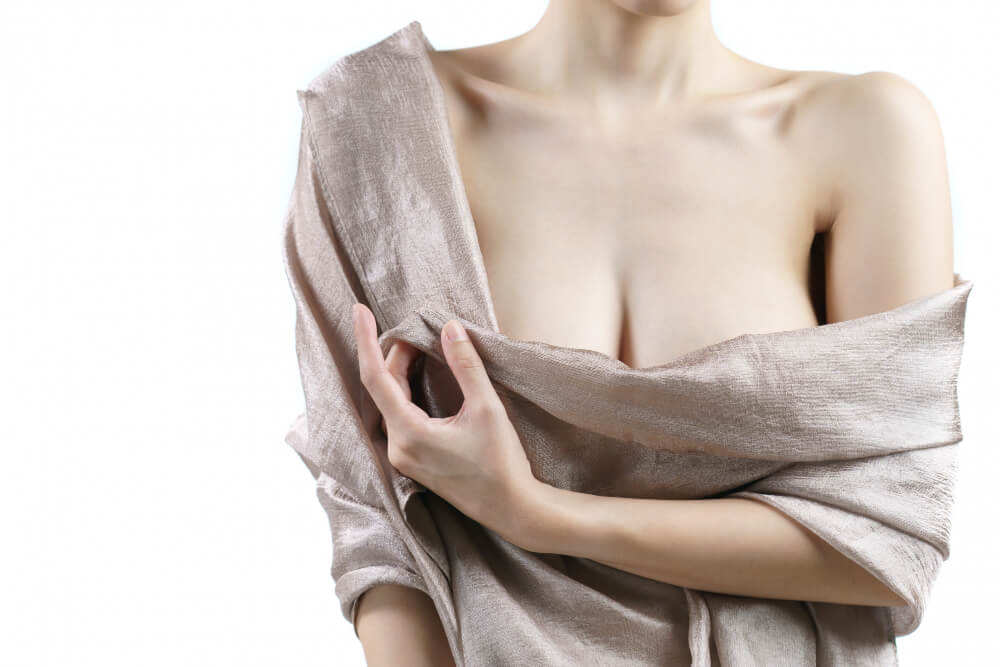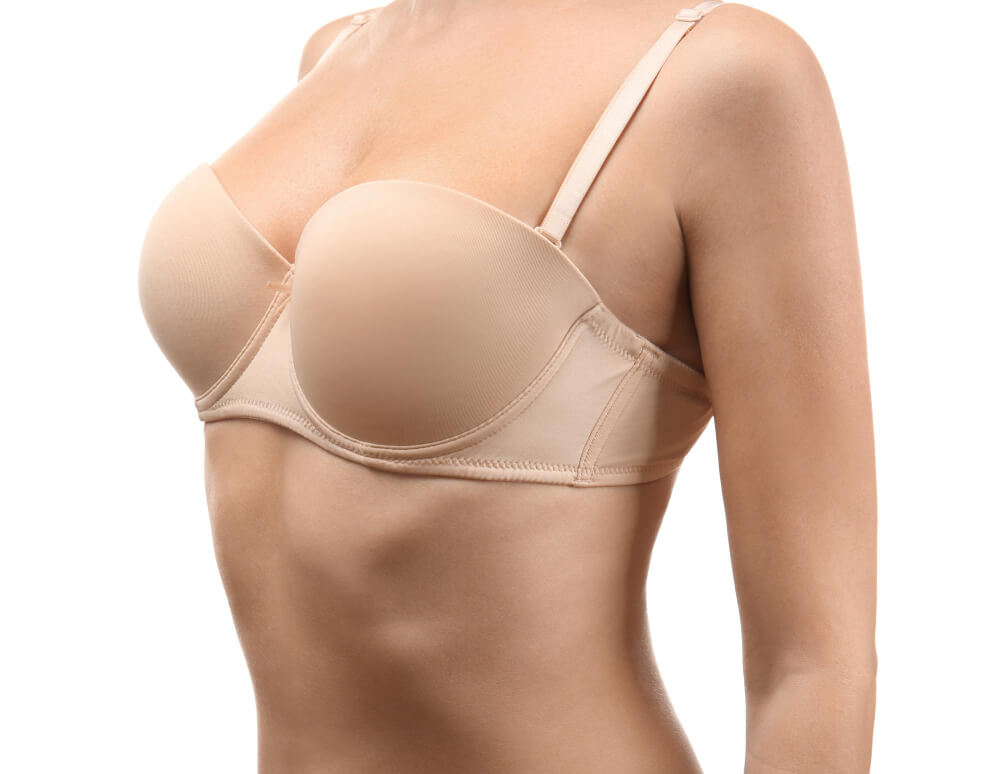Considering a breast enhancement but torn between traditional “under-the-muscle” and “over-the-muscle” approaches? At The Gallery of Cosmetic Surgery, we offer a third path that blends the best of both worlds—subfascial breast augmentation with a double-board-certified cosmetic surgeon, Dr. Craig Jonov. Nestled in Bellevue, our JCAHO-accredited surgical center has helped thousands of women achieve beautifully natural curves while keeping recovery comfortable and downtime to a minimum.
What Is Subfascial Breast Augmentation?
The word “subfascial” simply means “under the fascia.” During surgery, Dr. Jonov creates a precise pocket beneath the thin but firm connective tissue that covers the pectoral muscle (the pectoral fascia) yet above the muscle itself. The implant sits in that pocket:
- More coverage than subglandular placement. Your fascia and a layer of muscle shield the upper pole of the implant.
- Less movement than full submuscular placement. Because the muscle remains undisturbed, mainly, there is minimal “animation” when flexing.
By tucking the implant under this natural envelope, subfascial breast augmentation often delivers a smooth transition at the décolletage without the excessive pressure, workout restrictions, or extended soreness sometimes associated with a completely submuscular pocket.


Advantages Of Subfascial Placement
- Natural-looking slope: The extra fascial layer softens the implant edge for graceful upper-pole fullness.
- Reduced post-op discomfort: The muscle is left intact, so most patients describe the pain as a tightness rather than the deep ache that can follow submuscular surgery.
- Lower animation deformity: Because the implant no longer sits inside the muscle, pec contractions are less likely to cause visible distortion.
- Potentially quicker gym return: Many people resume light lower-body workouts within a couple of weeks, then gradually progress to chest exercises once cleared by the team.
- Excellent implant stability: The fascia acts like a built-in “internal bra,” helping hold the implant in position during healing.
Am I A Candidate For Subfascial Breast Augmentation?
Most healthy adults who desire fuller breasts and have realistic expectations qualify, yet a few characteristics make the subfascial pocket especially appealing:
- Athletic or physically active lifestyles where muscle distortion would be distracting
- Modest natural breast tissue but enough soft-tissue thickness to camouflage implant edges
- Prior subglandular implants that showed rippling or malposition
- A preference for a speedy recovery that doesn’t sideline upper-body movement for months
During your consultation, Dr. Jonov evaluates skin elasticity, tissue pinch thickness, and overall goals to confirm that the breast augmentation subfascial approach will meet both anatomical needs and aesthetic desires.
How It Works With Dr. Jonov
- Personalized planning: We utilize 3D imaging and extensive photo galleries, allowing you to “try on” sizes and profiles before surgery.
- Gentle anesthesia & meticulous technique: On the day of your procedure, our board-certified anesthesia team keeps you comfortable while Dr. Jonov creates a small, well-concealed incision (most often in the inframammary fold).
- Pocket creation & implant placement: A specialized instrument lifts the pectoral fascia, forming a snug subfascial pocket. Dr. Jonov inserts the implant—silicone, saline, or “gummy bear”—with minimal handling to lower the risk of capsular contracture.
- Artistic closure: Layered sutures refine the fold and help hold the implant in its new home. You head to our private recovery suite shortly after.
Total surgical time averages one hour, and most patients walk out the same day with only light dressings and a supportive surgical bra.
Contact Us
To schedule a complimentary consultation with Dr. Jonov or with questions about Subfascial Breast Augmentation at The Gallery of Cosmetic Surgery serving Kirkland, Bellevue & Seattle, WA.
Recovery
Expect a few days of tightness and swelling, similar to the feeling after an intense chest workout. Over-the-counter pain relievers are enough for many people. Here’s a typical timeline for subfascial breast augmentation results to unfold:
| Post-Op Stage | |
| Days 1-3 | Rest, short walks around the house, gentle arm movements at waist level |
| Week 1 | Back to desk work, shower normally; drive when off prescription meds |
| Weeks 2-3 | Light cardio; most bruising fades; swelling begins to settle |
| Weeks 4-6 | Cleared for lower-body and then gradual upper-body workouts |
| Months 3-6 | Final implant drop and fluff, scars lighten, confident return to full activity |
Follow-up visits with Dr. Jonov at one week, six weeks, and three months keep healing on track, and our nursing team is only a phone call away, seven days a week.

Why Choose The Gallery Of Cosmetic Surgery?
- Decades of experience: Dr. Jonov has completed well over 1,000 aesthetic procedures and is certified by the American Board of Cosmetic Surgery as well as the American Board of Oral & Maxillofacial Surgery.
- Accredited, on-site operating theater: Our state-of-the-art facility meets the same safety standards as local hospitals while offering a boutique, spa-like atmosphere.
- Extended hours & virtual consults: We welcome calls and offer Zoom visits for out-of-town guests.
- All-in-one support: From initial imaging to long-term scar care, we handle every detail so you can focus on feeling great.
To schedule your appointment with Dr. Jonov, you can fill out our online contact form, check our Price Simulator, or call (425) 775-3561.
Frequently Asked Questions
How long do implants last in a subfascial pocket?
Implants aren’t expiration-dated devices; many last 15–20 years. We usually recommend a check-in every one to two years to monitor changes.
Does subfascial placement cost more than traditional techniques?
The surgical fee is comparable tothat of under-the-muscle augmentation. Exact pricing depends on implant type and any combination of procedures.
Will my workout routine change permanently?
No. After the initial six-week healing window, most patients return to activities like push-ups, bench presses, and yoga inversions—whatever gets the heart pumping—with little to no implant motion.
Can subfascial surgery fix implants that sit too high or far apart?
Often, yes. By building a new pocket and adding structural support, Dr. Jonov can correct many placement issues during revision surgery.
Is the scar larger with this technique?
The incision is the same size as for other approaches (usually 3–4 cm) and hidden in the breast crease for a discreet result.

